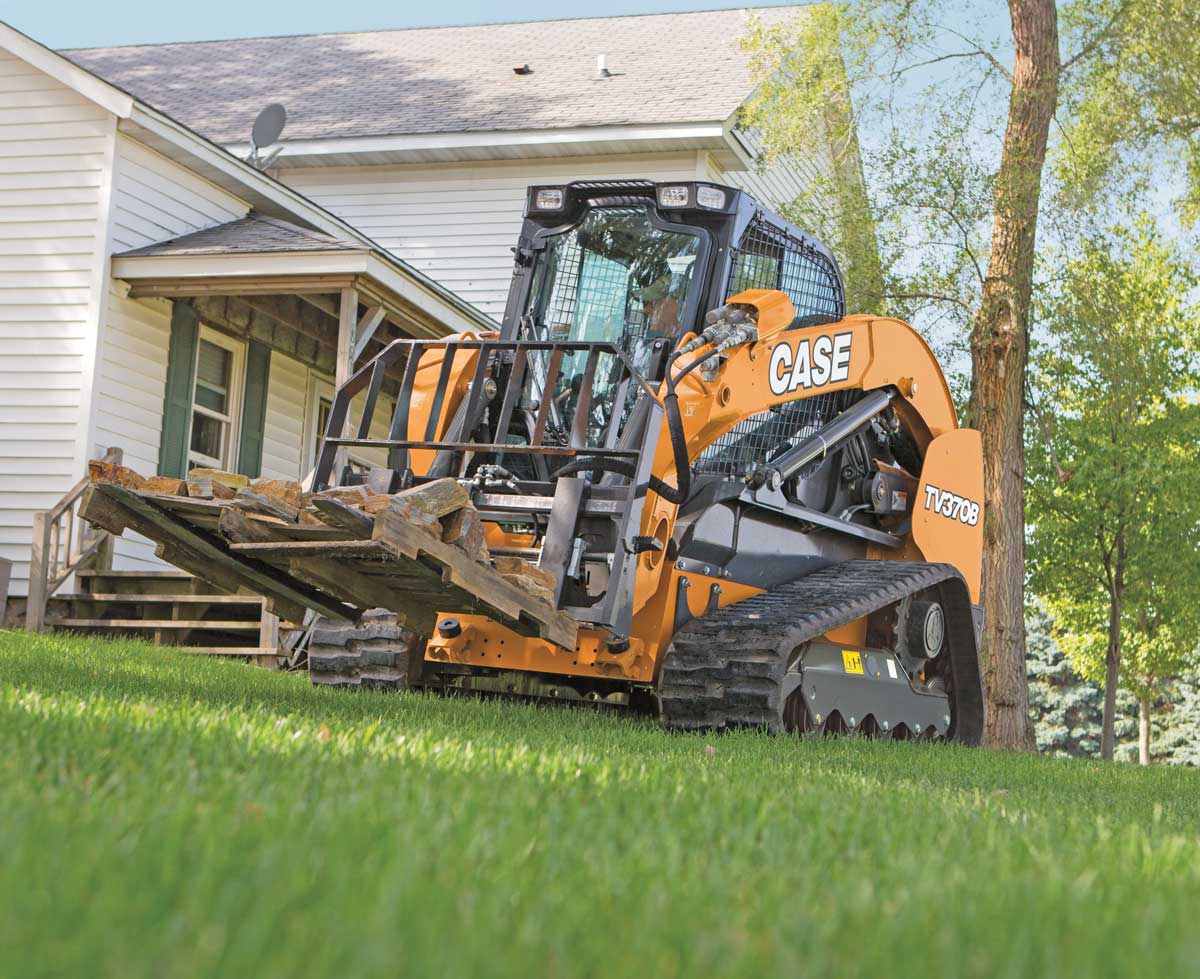Q&A: Discussing the 2024 Skid Steer and Track Loader Markets with Kubota’s Jerry Corder

We recently built a 6,000-word mega feature discussing everything there is to know about buying and renting a skid steer and track loader in 2024. To build that story, we interviewed more than 10 manufacturers. Some of those interviews make equally compelling copy. In fact, here comes one of those interviews right now. Jerry Corder, Kubota product manager for construction equipment, was kind enough to share his time and insights on the small loader market.
Compact Equipment: Jerry, thanks so much for taking the time to talk to Compact Equipment. We’re big fans of the Kubota brand. Maybe we can start off our discussion by giving a brief history of Kubota in the skid steer and track loader markets. How did you start, but also how many units do you offer today?
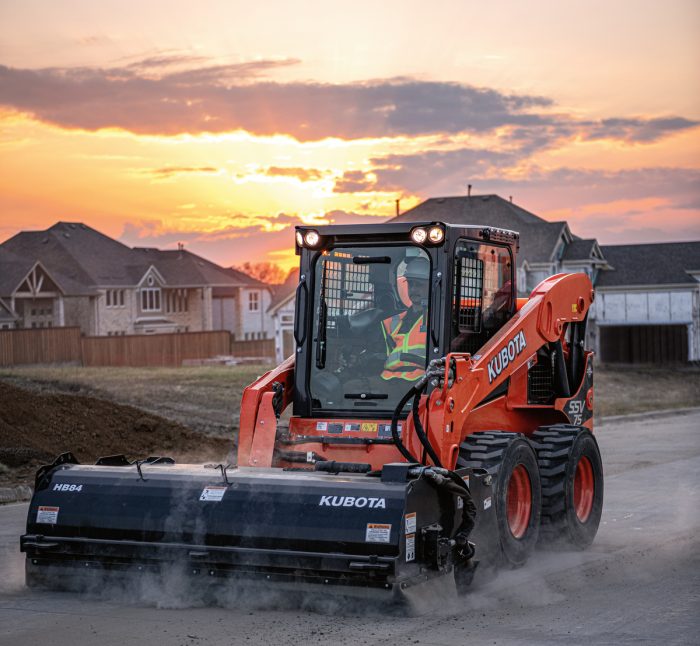
Corder: Sure thing. Kubota entered the skid steer market in 2015 when it unveiled its SSV Series skid steer loaders. The SSV Series includes the 64-hp SSV65 and the 74-hp SSV75 and are powered by Tier 4 four-cylinder Kubota diesel engines. The SSV65 boasts a rated operating capacity of 1,950 lbs and bucket breakout force of 4,839 lbs. The SSV75 has a rated operating capacity of 2,690 lbs and bucket breakout force of 5,884 lbs.
In 2010, Kubota introduced the first compact track loaders to its lineup with the release of the 75-hp SVL75 and 90-hp SVL90. Today, Kubota’s SVL Series includes the SVL65-2, SVL75-3 and SVL97-2. Powered by a 68-hp Kubota engine, the SVL65-2 offers a wide working range including a rated operating capacity of 2,100 lbs at 35 percent or 3,000 lbs at 50 percent, a reach of 34.9 in. and a hinge pin height of 118.5 in. The SVL75-3 is powered by a 74.3-hp Kubota engine and boasts a working range that includes a rated operating capacity of 2,490 lbs at 35 percent or 3,557 lbs at 50 percent, an impressive 6,191 lbs of breakout force and a hinge pin height of 122.7 in. The 96-hp SVL97-2 features a working range that includes a rated operating capacity of 3,200 lbs (at 35 percent tipping load), an impressive 7,961 lbs of breakout force and a hinge pin height of 128.5 in.
What is your most popular skid steer loader unit, and what is your most popular compact track loader unit?
Kubota’s most popular skid and track loaders are the SVL75 Series compact track loaders and the SSV75 skid steer loader. Kubota’s 75-hp track loader offers outstanding power for its size and is light enough to trailer behind a 3/4-ton truck.
What’s the most popular lifting pattern? Vertical or radial? Do you see radial lift going away? We’re seeing major manufacturers dropping radial models from their lineup.
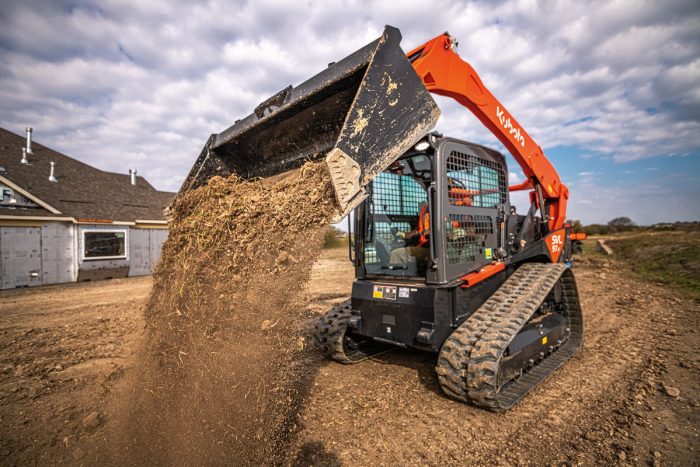
The vertical lifting pattern is the most popular — and more and more manufacturers are leaning that way — though both vertical and radial have their benefits. A machine with a vertical lift will have a greater rated lift capacity and a higher useful lift height. Since the loader arms stay close to the machine, rather than swinging out like they do in a radial machine, the center of gravity is always in tight to the unit. And since the bucket is always out in front rather than rotating over the cab of the machine, a vertical machine can make use of that maximum reach at height. Also, a vertical-lift machine can remain stationary close to an object as the loader arms keep the bucket in a vertical line, so you won’t have to reposition the machine as you lift or lower the load.
A radial arm machine, however, will give you better reach at flatbed height, since the swing of the loader arms are farthest out at that mid-height. Also, the radial arm design is simpler, so machines with that feature tend to be relatively less expensive.
What are the biggest markets for skid steers vs. track loaders in 2024? Ag? Homebuilders? Dirt work? Are we seeing skid steers and track loaders diverge even more in usage from contractors?
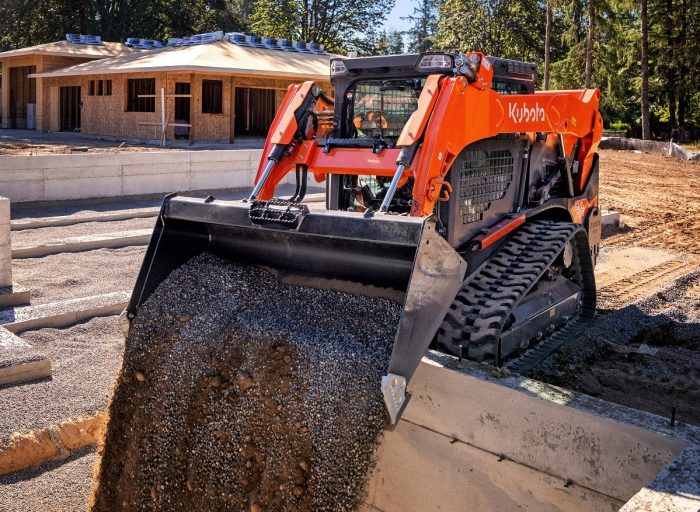
For general construction — and especially where dirt work is the norm — the track loader is the preferred and dominant machine. Skid steers are still in construction demand where work surfaces are hard and abrasive like in paving. Tires wear better than tracks on hard surfaces and are easier to replace as needed. This is also true in the ag industry where skid steers continue to dominate in dairies since so much of that work is done on concrete.
What units generally go into the rental industry?
For the most part, the rental industry prefers bare bones, low-spec equipment since equipment renters are generally much harder on equipment than owners.
What new attachment categories are gaining popularity for skid steers and track loaders? Mulchers? Micro trenchers? Grading systems?

Forestry mulching and automated grading systems are popular topics around skid and track loaders right now. Track loaders can get into smaller places than a typical dozer to grade, and that is important as housing lots get smaller. And being able to grade with a laser system makes the work go quicker and with a much smaller team. Likewise, forestry mulching machines and attachments can clear land of vegetation with a single machine and operator with nothing to haul away, making for an efficient process with minimal labor.
Do you offer any battery-powered skid steers or compact track loaders? Do you see electrification having an impact on the industry?
Kubota does not offer a battery-powered skid or track loader. There is a niche market for electric products, and it will remain so until battery technology offers a full day of operation and/or significantly quicker recharge.
Are hydraulic systems getting more complex and powerful? What technologies are changing the hydraulic capacity (power, cooling, efficiency) of these tool carriers? Think things like pressure compensating load sensing (PCLS) hydraulic systems.

As more and more purposes are found for skid steer and track loader tool carriers, and as more and more of them require multi-function operation, there are definitely more and more demands placed on the machine’s hydraulics. Added function and complexity often means a need for more flow and/or higher pressure. Kubota addresses this through adjustable hydraulic flow — on the SVL97-2 for example — to optimize the machine output to the needs of the attachment. Kubota also has the Advanced Multifunction Valve on our skid steers and the SVL75-3 track loader that ensure smooth movement of all hydraulic functions operated simultaneously without bogging another function down or stalling the machine.
Not to toot our own horn or anything, but we won a national gold award for the best how-to article in America. Wanna read it? Click here.
What new products or technologies has your company recently released that has changed the landscape of the skid steer or track loader marketplace? A whole new product lineup? Opulent cab options? A unique backup camera? What unique things has your brand done lately that’s changing the industry?
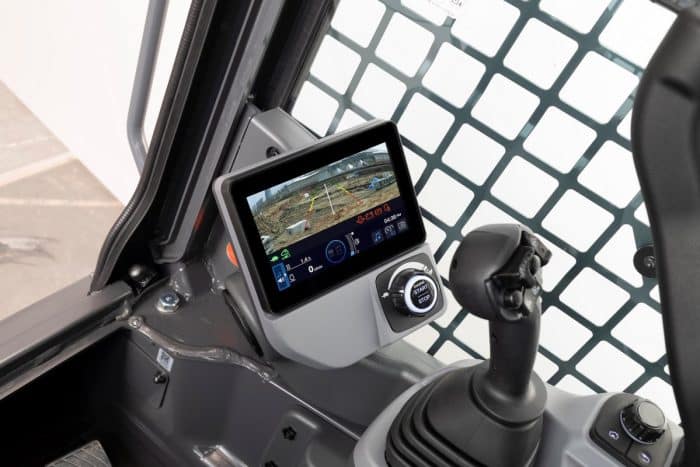
The Kubota SVL75-3 incorporates a number of new features as well as features taken from other products in the Kubota lineup. The SVL75-3 introduces an entirely new one-piece cab that is sealed to diminish dust, dirt, and water intrusion, and makes for a much quieter work environment as well. Kubota has added a new 7-in. touch screen inside the cab with keyless start, relays all machine vitals and serves as the display for the new, wide angle 176-degree backup camera.
The load arms have been redesigned, giving a higher hinge pin height — almost 3 in. higher than the SVL75-2 — and improved rear visibility. We have borrowed the Advanced Multifunction Valve from the SVL65-2, which allows for enhanced, simultaneous machine and attachment operation. The auto-downshift feature from Kubota compact excavators has been incorporated as well. This function automatically shifts from high to low range when executing a turn for a smoother ride and maximum available torque when exiting the turn.
We have also adopted the engine layout from our family of skid steer loaders, which places the radiator on top and moves the fuel tank to the rear bonnet. This opens up the engine bay to provide unimpeded access to the battery, all filters and all fluid fill locations for easier routine maintenance. Another new feature of the SVL75-3 touch screen is the ability to select one of three Track Response settings to tailor the ride to the preferences of the operator or to the needs of the site or terrain.
What advice would you give a contractor looking to buy a new skid steer or track loader?

There is no substitute for knowing your application and tailoring your machine to it. Do you need a big machine, or will your lift capacity requirements allow you to get away with a smaller one? What attachments will you be using? Will you need high flow to operate them? If you are transporting from site to site, what are your truck, trailer and license limitations?
Personal comfort also comes into play. Many operators spend the bulk of their day working the machine, so naturally they will want as comfortable a place as possible to spend hours after hour. Do you have room in the cab for yourself and your gear? Are you able to sit comfortably in the seat, operating over varying terrain for extended periods of time? Are there other features and options that not only make the experience in the machine more enjoyable — Bluetooth connectivity for example — but also a safer place to work — reversing or 360-degree cameras, adequate external lighting, etc.?
Will you purchase or lease? What are the available financing/leasing programs from the manufacturer? What is the resale reputation of a given brand? Even down to what do you know about the dealer? We all know that not all manufacturers are the same, but likewise not all dealers are the same. Service, warranty, and training support are at least as important and arguably more important than the initial sales experience.
In regard to usage and maintenance, there is no substitute for understanding and following the manufacturer’s recommendations. Every piece of equipment is different and has different capabilities. Understanding the manufacturer’s recommendations enables you to arrive home safely at the end of each day and without unnecessary and expensive service needs before the next day begins.
What trends do you see in the skid steer and track loader market overall? Are buyers gravitating toward certain sizes or technologies? Are there certain regions where sales are increasing or decreasing? What interesting evolutions do you see in the market and the near future?
There are definitely regional trends in the skid steer and track loader markets. In many places we see a 20:1 preference for track machines, but in dairy-heavy regions, or in areas where snow removal becomes a routine task, we can see that preference for a track machine fall to as low as 3:1. While the track loader is becoming more and more popular overall, there is still a place for a skid steer operating on concrete in a dairy barn. And since a skid steer generally has a relatively higher top speed — not to mention a lower price point — they are often the preferred machine for snow removal.
Jerry, thanks so much for your time and insights. Learn more about Kubota and Kubota loaders at kubotausa.com.
Keith Gribbins is publisher of Compact Equipment.
Compact track loaders are the most popular category of compact equipment in America. Learn why with loads of track loader features right here.

